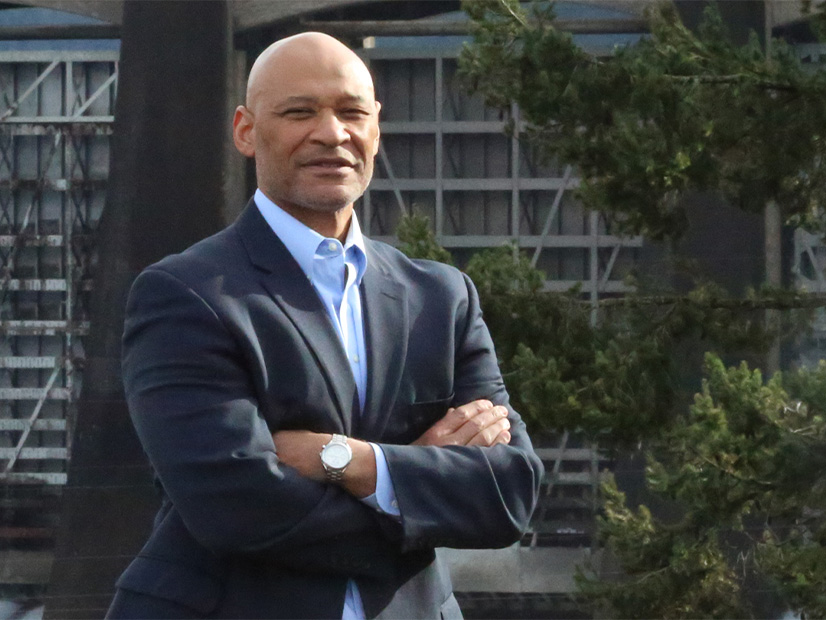CAISO’s adoption of the West-Wide Governance Pathways Initiative’s “Step 1” changes won’t overcome the Bonneville Power Administration’s objections to the governance of the ISO’s Extended Day-Ahead Market (EDAM), BPA Administrator John Hairston told U.S. senators from the Pacific Northwest.
“Our specific concern is that, with only Step 1 in place, the market governance remains under the ultimate authority of California,” Hairston wrote in an Aug. 21 letter to the senators, which has not yet been posted on the agency’s website.
Hairston’s comments were part of a broader response to a series of questions posed to him in a July 25 letter signed by Democratic Sens. Jeff Merkley (Ore.), Ron Wyden (Ore.), Maria Cantwell (Wash.) and Patty Murray (Wash.).
In their letter, the senators urged the agency to “act carefully and deliberately” before selecting a day-ahead market and to delay a “draft letter to the region” relaying its decision, previously slated for Aug. 29, until more developments play out around EDAM and SPP’s competing Markets+ offering. (See NW Senators Urge BPA to Delay Day-ahead Market Decision.)
The senators’ letter signaled a preference shared by many Western state officials, public interest groups and large energy users — and some utilities — that the region will benefit most from a single organized electricity market that includes CAISO.
It also expressed concern that BPA staff in April issued a “leaning” recommending the agency choose Markets+ over EDAM, citing the SPP market’s independent governance and overall design as primary factors supporting the opinion. The senators directed the agency to answer 14 detailed questions to clarify the reasons behind the leaning. (See BPA Staff Recommends Markets+ over EDAM.)
Inadvertently or not, the senators got one wish: In his Aug. 21 response, Hairston said BPA would delay its market decision until next year, an announcement it later would relay to its stakeholders on Aug. 25, saying both markets have “outstanding issues that require additional analysis.” (See BPA Postpones Day-ahead Market Decision Until 2025.)
But Hairston’s Aug. 21 response to the senators clearly — and understandably — shows the fingerprints of the staff that produced the leaning. It also evinces continued concerns among some parties in both the Northwest and Southwest about a market arrangement that could be dominated by California and its interests.
In response to the senators’ question about which market BPA expects “will provide the greatest improvement in grid reliability in the Northwest,” Hairston cites the benefit of the Markets+ requirement that its participating entities also participate in the Western Power Pool’s Western Resource Adequacy Program (WRAP).
“The EDAM proposal’s lack of a common resource adequacy metric makes it difficult to assess whether the market or its participants will be resource adequate in the planning horizon for the market,” Hairston wrote, adding that California’s “state-mandated” RA metrics don’t align with WRAP requirements and that EDAM will accept non-California participants that haven’t committed to the WRAP.
Responding to another question about which market would do more to reduce greenhouse gas emissions from the Northwest’s electricity sector, Hairston said Markets+ has made progress in developing GHG tracking and accounting procedures that would allow BPA’s customer base of publicly owned utilities to meet Washington’s cap-and-invest program obligations and Oregon’s “non-pricing” carbon requirements.
“Our continuing concern with CAISO’s EDAM design is that California is able to deem a disproportionate share of carbon-free market-traded resources as delivered to California, to the disadvantage of utilities in the Northwest and their ability to meet their state goals,” he wrote.
Addressing a question about the impact on the Northwest grid from “seams” between two different markets, Hairston cited BPA’s previous experience using the Coordinated Transmission Agreement with CAISO to enable several of the region’s utilities to use BPA’s transmission system to participate in the ISO’s Western Energy Imbalance Market before the agency itself joined that market.
“Bonneville expects to undertake a similar exercise if necessary to manage day-ahead market seams,” he said.
Governance Still Key
But the issue of CAISO’s state-run governance was front and center in Hairston’s response to the senators — just as in the staff leaning.
“Bonneville seeks to participate in a market that has a durable, effective and independent governance structure [that] provides fair representation to all market participants and stakeholders,” he wrote.
Hairston described the choice as being between Markets+, with its independent board of directors, and EDAM, which would fall under the “shared authority” of the Western Energy Markets (WEM) Governing Body and the ISO Board of Governors “appointed by the governor of California.”
Hairston acknowledged the progress made by the Pathways Initiative in forcing movement on CAISO’s governance. The ISO and WEM boards last month voted to approve the Pathways plan giving WEM officials “primary authority” over WEIM- and EDAM-related market-rule decisions. (See CAISO, WEM Boards Approve Pathways ‘Step 1’ Plan.)
But his response to the senators’ question about that effort illustrated his skepticism around whether the “Step 2” plan for advancing a California bill to grant the WEM Governing Body “sole authority” over the EDAM would get traction or meet BPA’s requirements.
“While we appreciate the Pathways’ sponsors optimism for a positive outcome, such efforts have repeatedly failed to secure legislative approval. It also remains to be determined what legislative conditions and constraints will continue to impede an independent governance structure,” he wrote.
Pathways backers expect to begin working with California lawmakers on a bill this fall after the conclusion of the current session. They hope to get the bill introduced and passed during the 2025 session, which starts in January.
That bill might not progress in alignment with BPA’s new day-ahead market decision timeline. The agency now plans to release its draft decision in March 2025, followed by a final decision in May.



